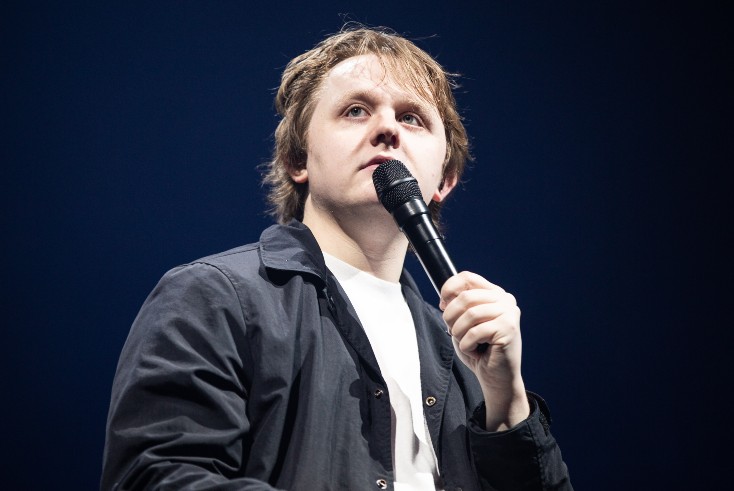Why brands and creators should be embracing differences

Opinion
When platforms are used to share our differences, it resonates with people. Brands should be tapping in to support and celebrate what makes us unique.
Lewis Capaldi’s Glastonbury performance caught the attention of millions across the globe. As one of the world’s biggest stars, it was a powerful moment to see him struggle so publicly with his Tourette’s syndrome, being supported by the incredible crowd who sang his global hit Someone You Loved back to him.
This moment resonated deeply with me, as someone who has lived with Tourette’s for most of my life. It also got me thinking about the importance of using platforms to show the world our differences and to celebrate our imperfections.
Authenticity is needed to spark important conversations and unfiltered, human interaction is the kind of thing audiences want to see. As someone with a voice, showing who you truly are can have a positive impact on so many lives. And this extends to all our differences, visible or not.
We love you Lewis Capaldi ❤️
Glastonbury crowds are the best. pic.twitter.com/x6ZnIIgRpP— BBC Radio 1 (@BBCR1) June 24, 2023
There is no doubt that we’re seeing this shift on social media with the type of content that people are starting to seek out. Gone are the days of “perfection porn” whereby hustling entrepreneurs preach 5am gym sessions followed by 16-hour workdays. People are now attracted to content from leaders like Richard Branson, who is honest about the mistakes he’s made and his own differences. In life, there is so much nuance to everyone you meet and so it should be the same when you come to social media platforms. After all, our differences are often our superpowers.
Although it presents its difficulties, my Tourette’s has never stopped me from achieving my goals. It sometimes even helps me by allowing me to channel my energy and focus on tasks that are important to me. It is when I am hyper-engaged and in a flow state that I experience limited or no ticks at all.
This definitely played a part in my passion for YouTube throughout my teens, helping me to build a channel that millions enjoyed and led me to some amazing opportunities, such as hosting the likes of Ed Sheeran and Chris Pratt. This ability to focus also led me to co-founding Influencer.
Whilst my achievements are not a direct result of my Tourette’s, it has certainly helped me to build strong connections along the way, increasing my relatability both as a content creator and a business leader.
Social media: the home of authenticity
People now come to social media platforms expecting to see authentic content from real people and want to engage in conversations that are important to them. Creators can open up about their differences on these platforms to build communities of like-minded people and form genuine connections with their audiences.
When I meet someone who also has Tourette’s, I feel like I share something with them and instantly feel a connection. It is the same when a creator opens up on Instagram or TikTok, but on a mass scale. For example, Jessie Davies is a TikTok user who creates stammer videos and has built a huge community of individuals who also have stammers, inspiring them to embrace their uniqueness and boosting her beauty business in the process.
Brand and creator partnerships are mutually beneficial
Tapping into niches and communities on social media via creator partnerships is a great strategy for brands to connect with their audiences, by celebrating differences. Equally, this can also benefit the creator, with the brand helping them to achieve something for their community.
Brands must be mindful to not just insert themselves awkwardly into these conversations, but to add additional value. For example, Tasha Ghouri, Love Island’s first deaf contestant, worked with Cadbury Fingers to encourage British Sign Language Lessons, advocating for increased inclusivity for the deaf community.
These types of partnerships can be really effective; brands can provide increased awareness, reach and media attention for the creator and their cause, whilst creators bring authenticity and a human element to the brand, really boosting the campaign in a way that is mutually beneficial.
Brands can celebrate differences too
People also want to see brands that embody these messages themselves, not just through the creators they work with.
Dove are a great example of this, with their ‘Real Beauty’ campaigns and recent #TurnYourBack campaign, encouraging TikTok users to say no to digital distortion.
Patagonia’s brand strategy is also centred around “being imperfect” and some brands have even taken a more playful approach, such as DASH water who infuse their drinks with wonky fruit and veg to celebrate “vegetable positivity”.
A no-brainer
Although a rare moment in the non-digital world, Lewis Capaldi’s Glastonbury performance now has over 21M views on Twitter alone. When platforms are used to share our differences, it resonates with people, and this has led to a cultural shift in what audiences want to see.
Organisations and creators are beginning to understand this and the opportunities that come with it. When it’s beneficial for brands, creators and audiences alike, joining in with these conversations is surely a no-brainer.
 Caspar Lee is co-founder and chief vision officer of influencer marketing agency Influencer. His YouTube channel, which he started in 2011, currently has over 6 million subscribers. He has also previously acted in film and television.
Caspar Lee is co-founder and chief vision officer of influencer marketing agency Influencer. His YouTube channel, which he started in 2011, currently has over 6 million subscribers. He has also previously acted in film and television.




